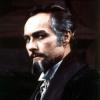 Submitted by Nicholas B on
Submitted by Nicholas B on

From terrifying myths with a moral lesson buried beneath the surface to penny dreadfuls based on true accounts of crime and horror, scary stories have been one of the most enduring and beloved forms of storytelling.
With origins dating back to the 1770s in Europe, phantasmagoria was a type of horror theatre that used several of the earliest moving image devices to create an immersive audience experience. In many ways, it pre-empted sensory theatrical trends like 3D and 4D technology that aimed to take viewers deeper into the feature film itself. Phantasmagoria incorporated not just the moving image, but special effects, surround sound, and – in some cases – hallucinogens to invoke stories that stayed with viewers long after their theatrical experience ended.
Even before phantasmagoria took hold in the late 1700s, images of terror and horror were being projected with the arrival of magic lanterns in the 1600s. The devil, demons, witches and ghostly apparitions were some of the more popular figures to be projected due to the ease of which their silhouettes could be invoked. So much so, in Europe conmen and clergy tricked viewers into believing that they were seeing the actual manifestations of the Biblical and religious creatures, in order to either con viewers or keep them close to God.
A descendent of the camera obscura, the magic lantern worked through the multi-use of a light source, a sequence of lenses, and transparent slides to allow image projection onto a wall or whatever was available, sometimes a white sheet. Candles were the most popular and easily accessible light source originally, but were replaced with substances like mineral lime, oxygen and hydrogen, which would burn longer and brighter, therefore creating a clearer picture. Images were drawn on to slides, sometimes intricately and sometimes in a mass-produced fashion, with the vision able to be shown to multiple people at once (much like the forthcoming theatrical experience). In the case of phantasmagoria, skilled lanternists determined they could use multiple magic lanterns to project several images at once and increase the impact. Demonic images would be overlapped on to each other or projected on to semi-transparent screens to heighten the eerie impact.
As ghost stories began to increase in popularity, so too did the desire for a lived experience and the work of charlatans like German Georg Schrepfer, who was among the first to realise the full potential of magic lanterns for horror storytelling. He became famous for ghost-raising séances where attendees fasted for 24 hours before attending his presentation at midnight and it’s believed they were fed salad and punch that contained hallucinogens. He’s said to have used images of well-known ghosts projected from hidden magic lanterns in a darkened room with draped altars, gaining a cult following that lived on over a century after his mysterious death by gunshot wound.
Magician Paul Filidort (also known as Phylidoor or Philidor) was another performer who ostensibly raised the dead and oversaw seances. After being run-out of Berlin for being a fraud, he established himself in Paris during the early 1790s with his show, Phantasmagoria, which incorporated optics, illusions and magic lanterns to project ghosts, disembodied spirits and other ghoulish apparitions. So popular were his shows, that he performed them twice a day at the Hotel Chartres on rue Richelieu. It’s believed that Etienne-Gaspard Robertson attended one of these performances and spawned his own Fantasmagorie a few years later. Robertson would become one of the most popular storytellers in the medium, largely thanks to the incorporation of modern storytelling techniques. When his shows would play in Paris theatres, he would move the magic lanterns so his projections would appear to be moving as well. There would be no external light sources allowed during the performance, much like a modern cinema, and he would include ringing bells, thunder claps and ghost calls as sound effects during key beats in the narrative. He would even use smoke for double impact, creating an eerie effect as slides were projected through it and the smell would capture audience senses.
By the time the 19th century rolled around, a phantasmagoria show at the Lyceum Theatre on the Strand was one of London’s biggest hits. It solidified the arrival of the performance style into the UK and eventually America in the early 1810s, with the air of the unknown as the territories of the country were expanded adding to interest in the medium. The death of the artform eventually came – like most things – as technology improved and audiences began to see through the tricks that had once enthralled and terrified them. However, phantasmagoria has lived on largely thanks to the art it has inspired: such as poems by Lewis Carroll and artwork by French painters like Jean-Auguste-Dominique Ingres and Anne-Louis Girodet. It inspired the controversial video game Phantasmagoria, which was released in 1995 and banned in Australia due to its realistic depictions of violence and sexual assault. Popular Disney attractions like The Haunted Mansion and live show Fantasmic have both been inspired by the medium with their use of moving image projections and practical effects. Even modern-day horror film techniques draw from those utilised in phantasmagoria, from illusions to the withholding of sensory experiences for maximum scares.
Maria Lewis - https://www.acmi.net.au/stories-and-ideas/phantasmagoria-and-earliest-forms-horror-storytelling/